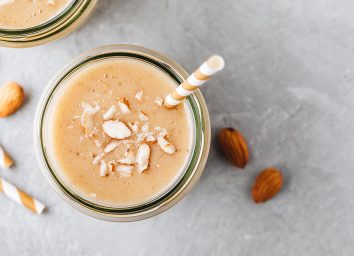What Happens to Your Body When You Eat Pasta
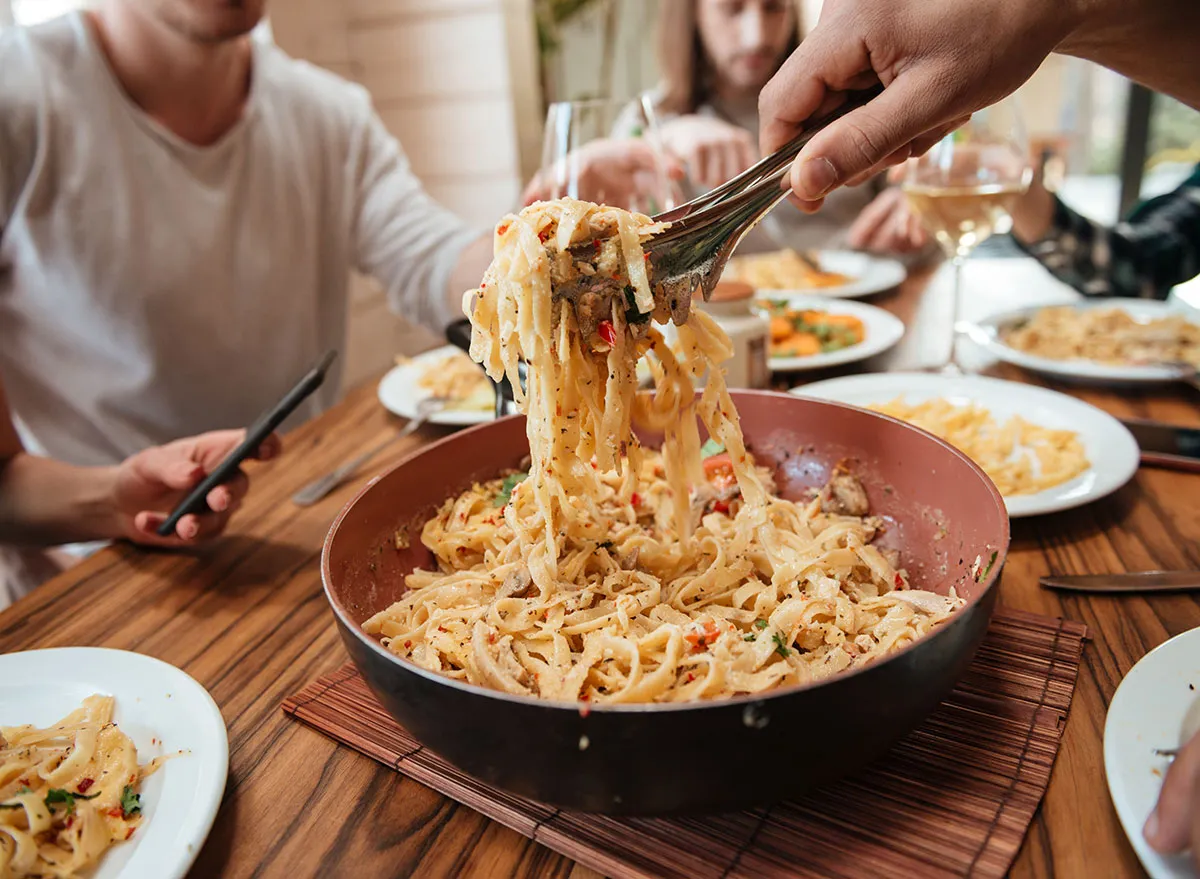
Whether it’s a hearty bowl of bolognese or garlicky pesto tortellini, there’s hardly a dish more worth drooling than pasta. Need a quick meal to whip up for a family of four? All you need is a box of penne and a jar of marinara. Cooking a romantic dinner for two? A rich carbonara should do the trick. But what happens to your body when you eat pasta? Can it ever be healthy? And how can you make sure you’re reaping all the rewards without compromising your waistline?
According to a 2011 survey by Oxfam, pasta is the world’s most popular dish (ahead of meat, rice, and pizza). Another 2013 study found that a whopping 59% of U.S. adults eat pasta at least once a week. Clearly, pasta is a household staple for Americans, and it makes sense, too: it’s cheap, it’s filling, and it’s super versatile.
Like all foods, eating pasta comes with both potential benefits as well as risks—depending on what kind and how much you’re consuming. That said, nutritionists agree that no one food can make or break your health.
“When consumed within the context of a well-balanced, nutrient-rich, high-quality diet, pasta can peacefully fit into your life without being at odds with your health,” says Lindsey Kane, RD and Director of Nutrition at Sun Basket. “It’s time to ditch the pasta-phobia once and for all.”
Wondering what happens when you chow down on that weekly bowl of spaghetti? Here are some of the effects experts want you to know about when you eat pasta, and for more healthy eating tips, be sure to check out our list of 21 Best Healthy Cooking Hacks of All Time.
You’ll get a solid dose of energy.
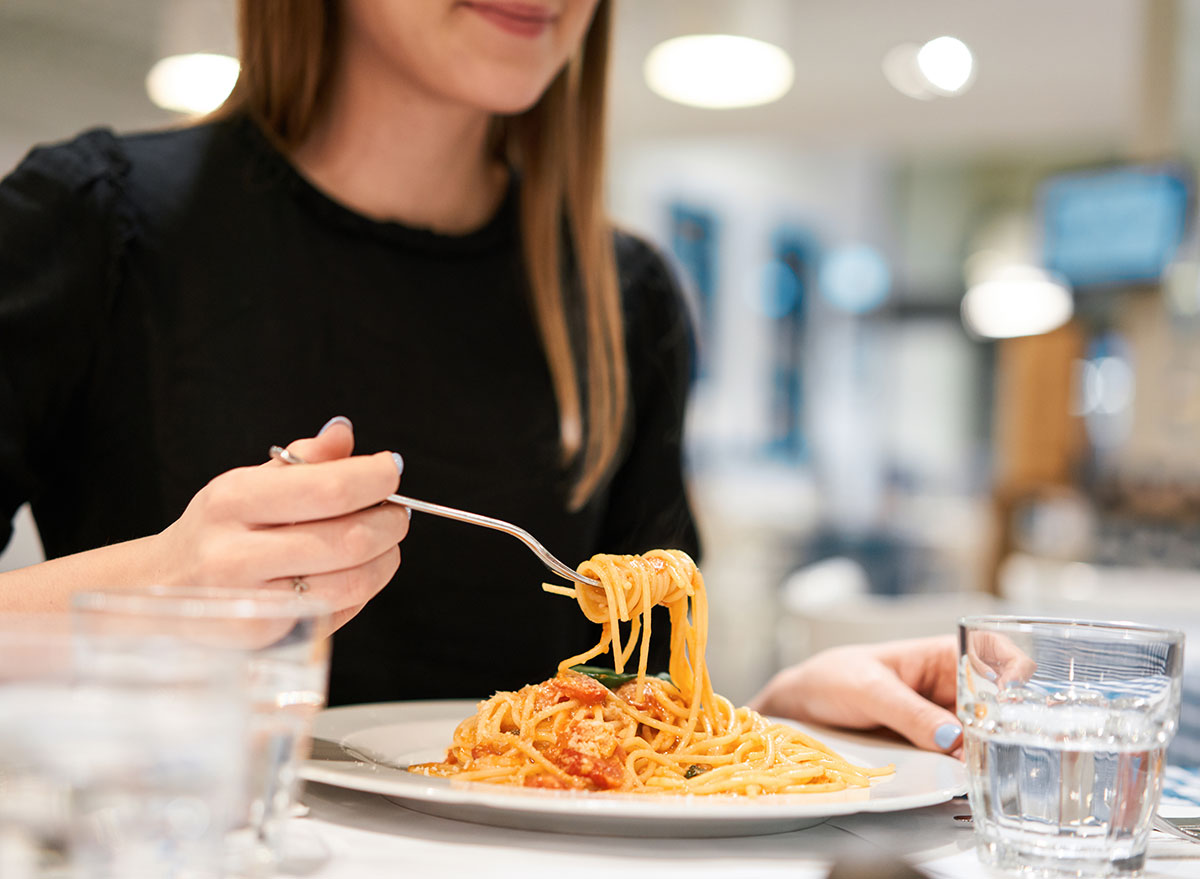
You know that old stereotype about runners who “carbo-load” before a big race? Well, apparently there’s a kernel of legitimacy to that strategy (provided it’s done carefully and strategically). That’s because according to Kane, the complex carbohydrates are the body’s primary source of fuel for energy.
Here’s how it works: When carbohydrates are digested by your body, they’re broken down into glucose. When glucose enters the bloodstream, it’s taken up into your body’s cells and used to produce a particular fuel molecule (known as ATP)—which cells can then use to power a wide variety of tasks. Even if your body already has enough glucose to meet its needs, any excess can be stored as glycogen (typically in muscle or the liver) for later use.
Reap the benefits of complex carbohydrates with these 9 Best Complex Carbs for Weight Loss.
You might feel a boost in your mood.

Speaking of complex carbohydrates, Kane says they can actually help to stimulate your brain’s production of serotonin, which is known as a feel-good hormone.
Serotonin is not just a natural mood stabilizer—it also plays a role in supporting bone health as well as aiding the body in healing wounds.
For more eating tips to feel good, check out our list of 50 Foods That Boost Your Mood.
You’ll feel full.
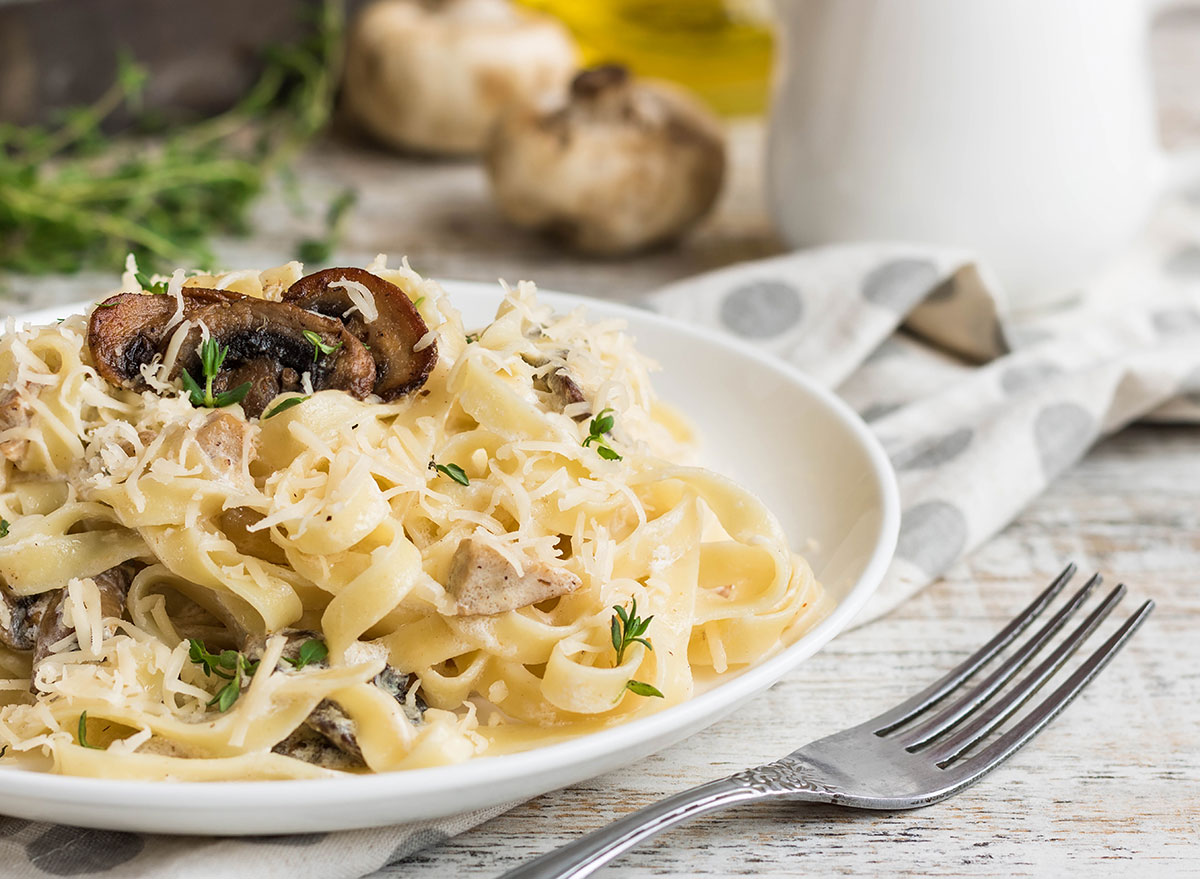
It goes without saying that pasta can be filling—but that’s especially true of the whole-wheat kind. Why? Because it packs more satiating fiber.
“In contrast, consuming white pasta—which is made with refined white flours—your body digests these quicker and it doesn’t have the same satiating effect as whole wheat making it easier to consume more,” says Vive Nutrition founder Andres Ayesta, MS, RD, LD, CSCS, CSSD.
According to Kane, the bran and the germ (the parts of the wheat kernel that contain fiber) are cast aside during the refinement process for white pasta. Additionally, fiber is known to prolong digestion, which translates to a slow, steady rise of blood sugar—rather than a quick spike and crash.
Kane also points out that in addition to boosting satiety, fiber feeds gut-friendly bacteria, promotes regularity, reduces cholesterol absorption, and supports overall GI health.
You might have some indigestion (if you overdo it).
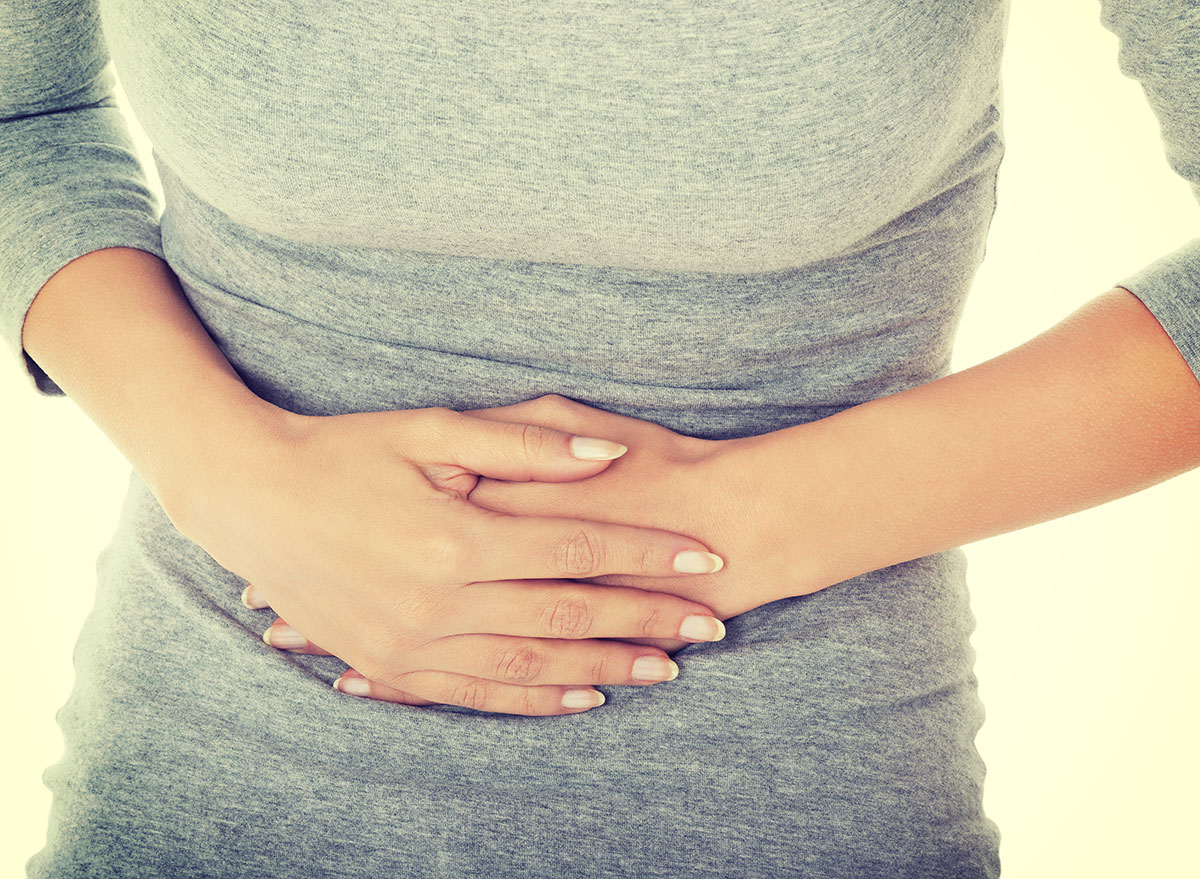
If you feel a little too full, or have any other unpleasant GI symptoms after eating pasta, you may just have eaten too much of it.
“Part of this discomfort is due to the physical discomfort that comes with stomach distention, and part is from the amount of energy your body has to allocate to support proper digestion (blood is directed to your stomach to aid in digestion), and finally, part is due to the extreme surge of blood sugar, followed by a subsequent crash,” says Kane.
If you’ve overdone it on the pasta, Kane notes that you may also fall into a “food coma” that leaves you feeling lethargic and low-energy.
“You can avoid this uncomfortable feeling by embracing intuitive eating principles like honoring your internal hunger and satiety cues (try noticing how hungry you are in the beginning of your meal and check-in with yourself throughout your meal) and practicing gentle nutrition (enjoy your pasta with plentiful vegetables, protein, and healthy fats),” she says. “If you eat too much, and are feeling blah, don’t beat yourself up over it. You are human! Let this simply be a learning experience, and view the next meal as an opportunity to strengthen your connection and attunement to internal biological cues.”
Although pasta gets a bad rap when it comes to weight gain, Ayesta insists that the only way in which pasta might compromise your waistline is if you’re consistently eating portion sizes that are too large.
“A typical serving of pasta is 2 ounces dried which comes to be about 1 cup cooked,” he says. “Most restaurants and food places serve portions that are usually three to four times larger than a typical serving, thus easily increasing the calorie load of the meal. When you have control over ingredients and portions at home, it makes it easier to measure adequate serving sizes.”
Here’s What the Perfect Food Portion Sizes Actually Look Like.
You’ll get an influx of vitamins and minerals.

You may be surprised to know that pasta has a lot more to offer your body than carbohydrates.
Specifically, Kane reports that pasta offers a healthy dose of copper and iron (which support red blood cell production and oxygen transportation), selenium and manganese (which helps antioxidants to fight free radicals that cause inflammation, premature aging, and chronic disease), phosphorus (which plays a role in bone health), and B vitamins (which are linked to energy metabolism).
Again, the best way to reap all these health benefits is to opt for whole-wheat pasta.
“When wheat crops are extracted for processing to produce the flour that makes pasta, they are either minimally processed to maintain the integrity of the wheat kernel (bran, endosperm, and the germ) therefore producing whole wheat flours,” says Ayesta. “When the wheat kernel continues to be milled and refined, however, the bran and germ are removed and white flour is obtained. When you eat whole-wheat pasta you are consuming the nutrients retained from the bran and germ—which are rich in vitamins, minerals, and fiber.”
Clearly, whole-wheat pasta is the way to go. It’s also worth noting that many gluten-free kinds of pasta (like quinoa pasta) are nutrient-dense, and high in vitamins and minerals—but may not offer as much fiber as whole-wheat varieties. Since many brands market their products misleadingly as being whole grain, Ayesta recommends looking for “whole wheat flour” as the first ingredient on the nutrition labels.
If you prefer the taste of white pasta, Kane suggests mixing it with half whole-wheat pasta or cooking the wheat pasta a little longer if you find the texture to be too chewy. Still can’t get on board with whole-wheat pasta? Then consider taking Kane’s pro tip and using a smaller serving of white pasta as a vehicle for other nutrient-dense foods.
“Try to add protein, veggies, and healthy fats—and perhaps shift your pasta ratio down and your veggie ratio up,” she says.
Looks like it’s time to make pasta for dinner! Get started with our list of 35+ Healthy Pasta Recipes.
